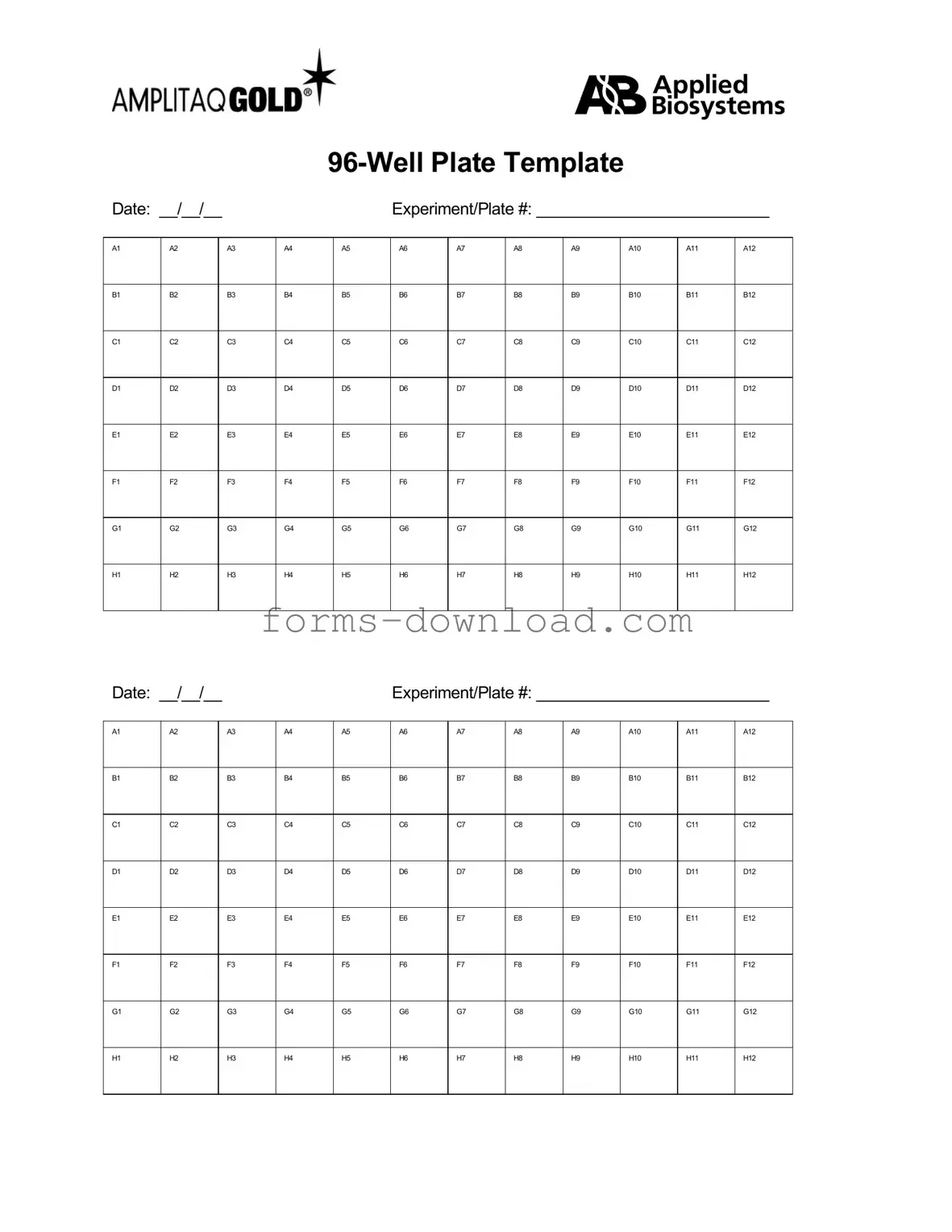The 96 Well form is a vital tool in the world of research and laboratory work, particularly in fields such as biology, chemistry, and environmental science. This form serves as a standardized method for documenting and organizing data collected from experiments involving 96-well plates, which are commonly used for high-throughput screening and various assays. Each well on the plate can hold a different sample, making it essential to accurately record the details of each sample, including its source, concentration, and any treatments applied. The 96 Well form typically includes sections for the identification of the experiment, the date, and the names of the researchers involved. Additionally, it allows for the systematic recording of results, observations, and any relevant notes that can aid in the analysis and interpretation of the data. By ensuring that all necessary information is captured in a clear and concise manner, this form helps maintain the integrity of the research process and facilitates collaboration among team members. Ultimately, the 96 Well form is more than just a piece of paper; it is a cornerstone of scientific rigor that supports the advancement of knowledge in various disciplines.

